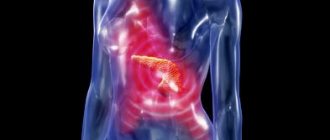If you have pain, dryness, soreness, a feeling of a “lump” in the throat, painful swallowing, then most likely it is inflammation of the mucous membrane of the back wall of the pharynx - pharyngitis . The throat with pharyngitis is red and inflamed.
Treatment of this disease must begin as early as possible, when the first symptoms appear. This will help avoid serious complications. Our clinic receives daily consultations from experienced otolaryngologists, candidates and doctors of medical sciences.
Why is pharyngitis dangerous?
Untimely treatment of pharyngitis is dangerous because the disease becomes chronic and has serious complications, including sinusitis, sinusitis, otitis media, kidney inflammation (glomerulonephritis), etc. But the most dangerous possible consequences are rheumatic lesions of the heart and joints.
1 Diagnosis of pharyngitis in MedicCity
2 Diagnosis of pharyngitis in MedicCity
3 Diagnosis of pharyngitis in MedicCity
Treatment of pharyngitis should be carried out only under the supervision of an ENT doctor! Acute pharyngitis may be the first manifestation of infectious diseases (measles, rubella, scarlet fever), requiring a different treatment regimen than for pharyngitis.
Chronic pharyngitis may not be an independent disease, but a manifestation of chronic gastritis, cholecystitis, pancreatitis and other gastrointestinal pathologies. With gastroesophageal reflux disease, for example, acidic gastric contents often enter the throat during sleep, which causes the development of chronic catarrhal pharyngitis . Until the underlying cause of the disease is eliminated, local treatment in this case will not produce results.
Reasons for the development of the disease
Common causes of pharyngitis are inhalation of cold or polluted air, exposure to chemical irritants (alcohol, tobacco).
Infectious pharyngitis can be caused by various microbes (strepto-, staphylo-, pneumococci), viruses (influenza, adenovirus) and fungi (candida). The disease can also develop as a result of the spread of infection from a nearby source of inflammation (for example, sinusitis, rhinitis, dental caries).
Difficulty in nasal breathing and overuse of vasoconstrictor drops can also cause pharyngitis.
Symptoms of pharyngitis may be present with the so-called postnasal syndrome (the English term is “postnasal drip”), when the constant flow of pathological secretion from the nasal cavity or paranasal sinuses along the back wall of the pharynx causes discomfort and a sore throat. This condition may be accompanied by wheezing, so it is necessary to carry out a differential diagnosis with bronchial asthma.
Classification of pharyngitis
The disease can occur in acute and chronic form.
Acute pharyngitis develops as a result of exposure to the mucous membrane of the pharynx by an aggressive factor (infection, chemicals, etc.). The course of the disease is favorable.
Chronic pharyngitis can develop as a consequence of untreated acute pharyngitis or be an independent disease resulting from prolonged irritation of the pharyngeal mucosa. The course of chronic pharyngitis is characterized by phases of exacerbation and remission.
1 Throat examination
2 Throat sanitation
3 Diagnosis of pharyngitis in MedicCity
When to see a doctor
In addition, qualified medical assistance will be required:
- When there are no signs of a cold, but the pain is intense and does not go away for two days.
- The temperature rises sharply and reaches critical levels.
- Purulent formations are visible on the mucous membranes of the throat.
- If the changed voice is not restored within 2 weeks.
An ambulance will be called if the intensity of the pain does not allow you to swallow saliva or the swelling of the mucous membranes is severe, which causes difficulty breathing, in which extraneous noises in the form of whistling and wheezing are heard.
Symptoms of pharyngitis
The symptoms of pharyngitis (acute and chronic) are similar to each other, but there are still slight differences:
Acute pharyngitis
- dryness and sore throat;
- pain when swallowing;
- less often – general malaise, increased body temperature;
- possible irradiation of pain to the ears.
Chronic pharyngitis
- dryness, sore throat;
- sensation of a lump in the throat, which makes you want to cough;
- dry cough.
Treatment of sore throat and head
The treatment regimen is selected individually. In most cases, taking medications and staying in bed at home is sufficient. However, in advanced cases, hospitalization is carried out to constantly monitor the patient’s condition and perform procedures. Your doctor may prescribe the following for a sore throat and head:
- taking antibiotics - drugs to destroy pathogenic bacteria that cause inflammation;
- bed rest, drinking plenty of fluids, antiviral drugs are the main methods of treating ARVI and influenza;
- for diseases of the thyroid gland - taking the hormones that it produces in case of their deficiency;
- painkillers, fever reducers, anti-inflammatory solutions and other symptomatic methods;
- surgical methods - may be needed to open ulcers and remove tumors.
Treatment is prescribed after an individual examination. The scheme will include only those techniques that effectively eliminate the causes and symptoms of the underlying disease. Doctors at the Clinical Brain Institute specialize in the treatment of headaches and sore throats. One of the conditions for successful treatment is compliance with all instructions at home.
Pharyngitis in children
Pharyngitis in children is easy to recognize. Symptoms of pharyngitis in children may be as follows. The child complains of scratching and sore throat, it is difficult for him to swallow, and he coughs. The back wall of the throat is red, covered in small tubercles, but the tonsils on both sides of the tongue are in normal condition, pink and clean. With pharyngitis, the child experiences weakness, headache and sore throat, lack of appetite, and difficulty swallowing.
Acute pharyngitis is more common in children and adolescents. Typically, acute pharyngitis occurs against the background of colds.
Treatment of pharyngitis in children
How to treat pharyngitis in children? Before starting treatment, you need to establish the cause of the disease. Then remove too hot and cold foods, cold drinks (especially soda) from the child’s diet, and refrain from spicy, salty and solid foods.
You can apply warm compresses to the neck, warm the child’s feet, drink warm milk with honey and butter. Gargle with a decoction of chamomile, oak bark and other anti-inflammatory herbs.
Reasons why your head and throat hurt
Painful sensations are a consequence of inflammatory processes or mechanical damage. They can also occur in a healthy person if dust particles, smoke, chemicals or other substances get on the mucous membrane. However, more often pain in the throat and head is caused by various diseases that require an individual approach to treatment.
Angina
Sore throat is an infectious disease that occurs with inflammation of the components of the lymphatic ring of the pharynx, mainly the tonsils. Its causative agents are pathogenic microorganisms, most often streptococci and staphylococci. Bacterial and fungal forms are less commonly diagnosed. The process occurs in an acute form, with fever, general weakness and other symptoms. In the initial stages, sore throat can be easily mistaken for a common cold, but it is more acute, especially in children.
There are several forms in which angina can manifest itself:
- Catarrhal is a mild form, the symptoms of which may subside within a week. Microorganisms cause symptoms such as a sore throat and pain that worsens when swallowing. The palatine tonsils are enlarged and covered with a film, the mucous membrane becomes red and inflamed.
- Follicular – a form with a more acute and prolonged course. The disease begins with an increase in temperature to 38–39 degrees and a general deterioration in health. There is also a severe sore throat that spreads to the ear, nausea and vomiting, and various digestive disorders. The palatine tonsils are enlarged and raised light dots appear on them.
- Lacunar - the course of angina resembles follicular, but occurs in a more acute form. The tonsils are enlarged and painful, covered with a white film. Symptoms persist for 5–7 days, after which the process gradually begins to subside.
- Phlegmonous (intratonsillar abscess) is a severe but rare form of angina. Its course is associated with suppuration and purulent melting of the tonsil area. The process is accompanied by an increase in temperature to 38–39 degrees or more, as well as severe headache, nausea, and weakness. Without timely treatment, the disease is dangerous due to general intoxication.
- Ulcerative is another rare form. Painful sensations are associated with the formation of an ulcer on one of the palatine tonsils. The disease does not cause an increase in temperature, but has a long course - the ulcers completely disappear no earlier than after 1-3 weeks.
Sore throat is a disease that requires timely treatment. If you don't take antibiotics to clear up the infection, there is a chance that complications will develop. These include abscesses, intoxication, fever, and pyelonephritis - inflammation of the kidneys.
Laryngitis
Laryngitis is an inflammation of the larynx. The disease rarely occurs on its own, more often it occurs against the background of whooping cough, bronchitis and other infectious diseases of the respiratory tract. Its causes are streptococci, staphylococci, tuberculosis bacteria and other pathogens. The disease can also be triggered by environmental factors: dust and increased air pollution, smoking, fatigue and prolonged stress on the vocal cords. One of the most dangerous is allergic laryngitis, which can become chronic and cause swelling of the larynx.
The disease is accompanied by characteristic symptoms:
- sore throat, sensation of a foreign body when swallowing;
- sore throat;
- chills, fever, weakness and signs of intoxication;
- severe cough, sometimes producing sputum mixed with blood or pus.
Treatment of laryngitis, which occurs in acute form, lasts an average of 7–10 days. If you regularly take antibacterial agents, gargle and perform other procedures prescribed by your doctor, the disease will go away without complications. If left untreated, the disease can become chronic with regular exacerbations.
Peritonsillar abscess
Peritonsillar abscess is one of the most common infectious diseases of the pharynx. It develops in the form of suppuration of the tissue located near the tonsil. The process often occurs as a complication of tonsillitis or chronic tonsillitis and is often located on one side. At the initial stage, inflammation of the soft tissues develops, then they begin to suppurate and form a cavity filled with pus.
A peritonsillar abscess causes the following symptoms:
- sore throat, which worsens when swallowing and turning the head;
- increase in body temperature, including to critical levels;
- spasms of the masticatory muscles - in some cases the patient cannot open his mouth;
- bad breath, characteristic of purulent processes.
Timely treatment is important for peritonsillar abscess, as with other purulent formations. The regimen will include taking antibiotics that will destroy pathogenic microflora. If conservative treatment does not bring results, the abscess is opened. The procedure lasts a few minutes and takes place without complications, after which your health quickly improves.
Viral diseases
A sore throat is the first sign of viral respiratory diseases. Influenza and ARVI appear during periods of decreased immunity, in response to the proliferation of pathogenic microflora on the mucous membrane. Viruses are constantly in the external environment, but human immunity builds a barrier against them. As a result of a decrease in protection, viruses enter the body with inhaled air, and a typical picture of a cold develops:
- pain and sore throat;
- temperature rise, in some cases to high levels;
- headaches and dizziness, weakness;
- cough and other symptoms.
Even if the cold is mild, you must remain in bed until complete recovery. If you return to normal life, even with a slightly elevated temperature and sore throat, the process can develop into a chronic stage. In advanced cases, the infection spreads to the lower respiratory system and causes viral pneumonia.
Osteochondrosis
Main article: Headache with cervical osteochondrosis
One of the reasons why your throat and head hurts is osteochondrosis of the cervical spine . This is a common disorder that occurs in patients of any age. The disease occurs when the intervertebral cartilage becomes thinner. In advanced stages, osteochondrosis is manifested by intervertebral protrusions and hernias - protrusion of discs, up to the rupture of their membrane.
Previously, it was believed that osteochondrosis was a disease that occurred only in older people. However, its causes include various factors:
- uneven load on the intervertebral discs, which can be caused by incorrect posture, carrying bags on one shoulder, congenital curvature of the spine;
- a sedentary lifestyle is the cause of insufficient development of skeletal muscles;
- playing sports that involve falls and increased stress on the cervical spine;
- history of trauma.
Typical symptoms of osteochondrosis are pain and crunching in the neck. However, at the initial stages they may be absent. The disease is determined by additional signs: increased or decreased blood pressure, headache and dizziness, numbness of the fingers. Treatment is selected individually, depending on the degree of damage to the intervertebral discs. In most cases, taking medications and special exercises is sufficient, but in advanced stages surgery may be required.
Other reasons
Head and throat pain are symptoms that can occur due to various diseases. They are associated with infectious and inflammatory processes, mechanical damage to the mucous membrane and other factors. The examination may reveal the following disorders that lead to painful sensations:
- overwork and tension of the vocal cords;
- chicken pox is an infectious disease that initially resembles a cold, but then manifests itself as a skin rash;
- neuralgia of the glossopharyngeal nerve - acute, shooting pain, the patient cannot swallow food;
- neoplasms – the appearance of a lump or lump in the neck area requires urgent examination;
- diseases of the thyroid gland - it is located on the front surface of the neck, so when it is inflamed, pain is also felt when swallowing.
All diseases that can cause sore throat, headaches and related symptoms require more detailed diagnosis. It is important to determine what caused the pain in order to begin treatment in time.
Pharyngitis in adults
Unlike children, chronic pharyngitis is most common in adults.
Patients are bothered by pain, dryness and soreness in the throat, they find it difficult to swallow, they often want to cough, but the contents are difficult to cough up. With chronic pharyngitis, headaches occur, sleep deteriorates, and general weakness is noted.
The main causes of pharyngitis include:
- untreated colds;
- remaining caries in the mouth;
- smoking;
- frequent stress;
- weakened immune system;
- drinking cold (straight from the refrigerator) and too hot drinks;
- uncontrolled use of medications;
- allergy;
- poor environment and work in hazardous production.
Prevention methods
Most diseases that can cause pain in the throat and head are acquired in nature and can manifest themselves even in adulthood. This means that following certain rules will help avoid their occurrence. To prevent headaches and throat pain, doctors give several recommendations:
- during windy and cold weather, wear clothes that completely cover the throat, and also wear warm hats;
- if you feel that there is a foreign body in your throat, immediately sign up for an examination;
- take enough vitamins and microelements;
- Continue treatment for colds until the symptoms go away completely.
The Clinical Brain Institute offers individual programs for diagnosing and treating pain in the throat and head. Our center employs experienced specialists of a wide and narrow profile, as well as precise, modern equipment. There are all conditions for comfortable treatment in a hospital or for routine health checks. However, the effectiveness of treatment depends not only on the correct medication regimen, but also on following all the doctor’s recommendations at home.
Treatment of pharyngitis
When treating pharyngitis, qualified diagnostics are required, including examination by an otorhinolaryngologist, a smear from the oropharynx for flora with determination of sensitivity to antibiotics and bacteriophages, and also, if necessary, consultation with a gastroenterologist, general and biochemical blood tests, general urinalysis, and ultrasound of the abdominal cavity.
1 Laboratory diagnostics in MedicCity
2 Laboratory diagnostics in MedicCity
3 Laboratory diagnostics in MedicCity
Treatment of pharyngitis includes general measures and local therapy .
General events
It is necessary to sanitize the upper respiratory tract and oral cavity - eliminate adenoids, rhinitis, deviated nasal septum, sinusitis, caries, etc. It is also important to cure gastrointestinal diseases, which are often the cause of the development of pharyngitis.
Medicines aimed at increasing immunity (hardening procedures, vitamin therapy, etc.) are also prescribed.
It is recommended to reduce the impact of negative environmental factors on the pharyngeal mucosa (smoking, dust, chemicals, etc.).
Local treatment
Drug therapy includes antibiotic therapy as indicated, irrigation of the pharynx with medications, lubrication of the mucous membrane of the posterior pharyngeal wall, etc.
Alkaline, oil-alkaline, herbal inhalations are very effective against pharyngitis. It is also important to gargle frequently with antiseptic solutions (the patient can do this at home independently).
The course of treatment for chronic pharyngitis usually includes 10-14 treatment procedures performed daily or every other day. It is also recommended to carry out maintenance courses of treatment 2-3 times a year.
Remember that tobacco smoke, strong alcohol, household dust, cold air can cause exacerbation of chronic pharyngitis! During your illness, avoid drinking alcohol, smoking, and walking in cold, damp weather!
For pharyngitis, treatment should only be prescribed by an otolaryngologist! Medicines purchased at random or on the recommendation of friends may turn out to be useless or harm your health!
Diagnostic methods
To diagnose why your head and throat hurt, a simple examination may be enough. However, many diseases occur with a similar clinical picture, so it is important to distinguish them. This will require additional instrumental and laboratory examinations, the results of which will indicate their main cause. The doctor may prescribe the following examination methods:
- examination - allows you to detect inflammation of the tonsils and lymph nodes, redness of the mucous membrane of the throat;
- smear examination - bacterial culture is performed to accurately determine the type of pathogen;
- clinical, biochemical blood tests;
- endoscopic examination - prescribed for suspected neoplasms or foreign bodies in the throat.
The Clinical Institute of the Brain has all the conditions for an accurate and comfortable diagnosis of pain in the throat and head. Doctors will select tests that will quickly determine the cause of pain and discomfort. Our center has high-quality, modern equipment, thanks to which any violations are diagnosed.










